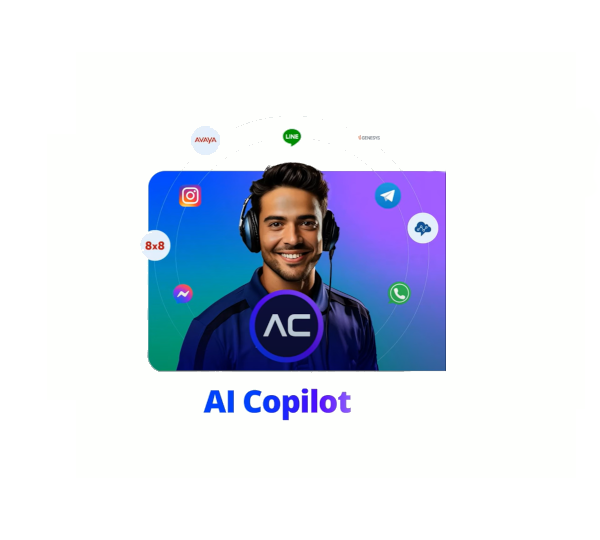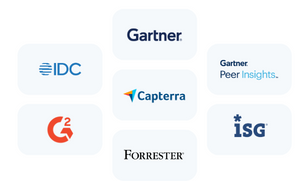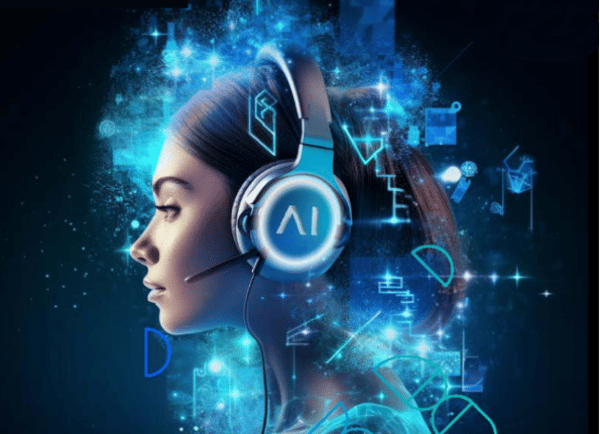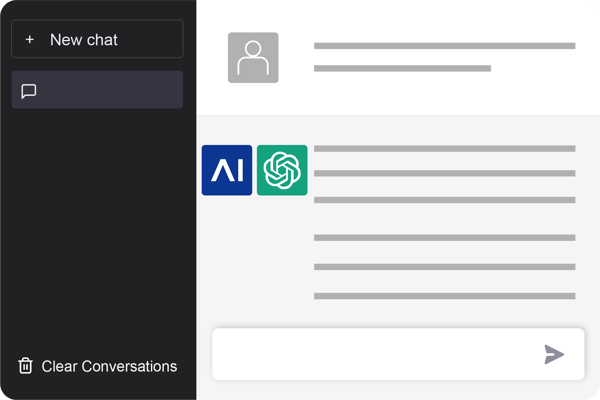-
Solutions
Back
-
Meet Your AI Workforce
Transform customer engagement with fully pre-trained AI Agents
Explore Enterprise AI Agents
By Category
By Contact Center Platform
More integrations
-
-
Platform
Back
Cognigy.AI Platform
Platform Capabilities
-
AI Agent Manager
Visual AI Agent creation and orchestration engine
-

Agentic AI
Autonomous, goal-oriented AI Workforce powered by LLMs
-

Voice Gateway
Turnkey voice connectivity to any contact center
-
Generative AI
Enterprise-ready LLMs for CX transformation
-
Knowledge AI
AI-based semantic search and knowledge management
-
NLU
Market-leading AI for 100+ languages
-
Multimodal CX
Cross-channel customer journeys with xApps
-
.png?width=60&height=60&name=AI%20Copilot%20logo%20(mega%20menu).png)
Agent Copilot
Next-gen agent assist for enterprise contact centers
-
Live Chat
AI-powered Live Agent workspace
-
Insights
Omnichannel reporting and analytics suite
-
-
References
Back
-
Resources
Back
Learn
-
Downloads
Guides, white papers, analyst reports and more
-
Blog
Stay in the loop on everything CX and CAI
-
Cognigy Academy
Become a certified expert with on-demand courses
-
Showcase Shorts
Explore the art of the possible in short videos demonstrating CAI
-
CX Disruptors
Insights from leading voices in the customer service industry
Get the Latest
-
eBook: Blueprint for an AI-First Contact Center
Download now -
eBook: Generative AI for Contact Centers
Download now -
Webinar: Generative AI and Cognigy in the Contact Center
Watch now
-
-
Company
Back
Who We Are
-
About Us
Join our mission to make Conversational AI more accessible
-
Our Partners
Dive into our global ecosystem of leading business and technology partners
-
Events
Find us at live conferences or virtual meetups
-
Careers
Help us achieve our vision with your talents and skills
-
News & Announcements
Be the first to know about all the latest news
-
Nexus
The Most Anticipated Contact Center AI Summit
-
Contact Us
Reach out to our experts and get your questions answered
Trustworthy AI
-
Cognigy Trust Center
See how we help your organization secure sensitive data and comply with applicable laws and regulations.
Read More -
The Future of Enterprise-Grade AI Adoption
An in-depth guide into the trusted use of AI in customer service automation
Read More -
Cognigy.AI is officially AIC4-approved
Find out everything you need to know about establishing "Explainable AI" based on the AIC4 criteria catalogue.
Read More
-
By Contact Center Platform
More integrations
Cognigy.AI Platform
Platform Capabilities
-
AI Agent Manager
Visual AI Agent creation and orchestration engine
-

Agentic AI
Autonomous, goal-oriented AI Workforce powered by LLMs
-

Voice Gateway
Turnkey voice connectivity to any contact center
-
Generative AI
Enterprise-ready LLMs for CX transformation
-
Knowledge AI
AI-based semantic search and knowledge management
-
NLU
Market-leading AI for 100+ languages
-
Multimodal CX
Cross-channel customer journeys with xApps
-
.png?width=60&height=60&name=AI%20Copilot%20logo%20(mega%20menu).png)
Agent Copilot
Next-gen agent assist for enterprise contact centers
-
Live Chat
AI-powered Live Agent workspace
-
Insights
Omnichannel reporting and analytics suite
Analyst Recognition & Awards
Learn
-
Downloads
Guides, white papers, analyst reports and more
-
Blog
Stay in the loop on everything CX and CAI
-
Cognigy Academy
Become a certified expert with on-demand courses
-
Showcase Shorts
Explore the art of the possible in short videos demonstrating CAI
-
CX Disruptors
Insights from leading voices in the customer service industry
Get the Latest
-
eBook: Blueprint for an AI-First Contact Center
Download now -
eBook: Generative AI for Contact Centers
Download now -
Webinar: Generative AI and Cognigy in the Contact Center
Watch now
Who We Are
-
About Us
Join our mission to make Conversational AI more accessible
-
Our Partners
Dive into our global ecosystem of leading business and technology partners
-
Events
Find us at live conferences or virtual meetups
-
Careers
Help us achieve our vision with your talents and skills
-
News & Announcements
Be the first to know about all the latest news
-
Nexus
The Most Anticipated Contact Center AI Summit
-
Contact Us
Reach out to our experts and get your questions answered
Trustworthy AI
-
Cognigy Trust Center
See how we help your organization secure sensitive data and comply with applicable laws and regulations.
Read More -
The Future of Enterprise-Grade AI Adoption
An in-depth guide into the trusted use of AI in customer service automation
Read More -
Cognigy.AI is officially AIC4-approved
Find out everything you need to know about establishing "Explainable AI" based on the AIC4 criteria catalogue.
Read More





.png?width=600&height=600&name=Knowledge%20AI%20Feature%20image%20(2).png)









